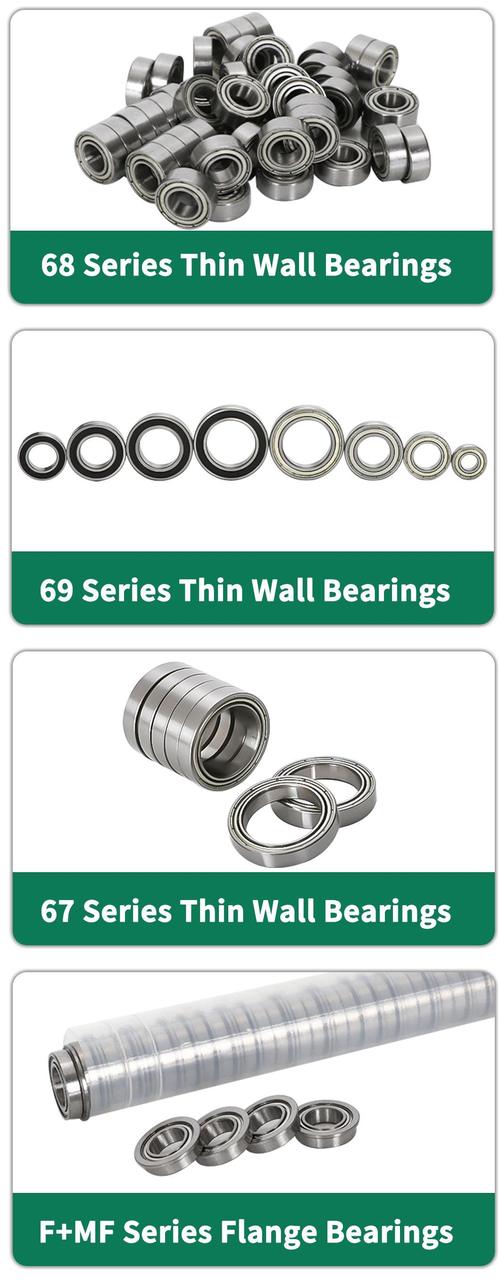Thrust Bearings: A Comprehensive Guide to Types, Applications, and Maintenance
Thrust bearings are specialized components designed to manage axial loads in rotating machinery, ensuring smooth operation and reducing friction. They are critical in applications like automotive transmissions, aerospace systems, and industrial equipment where directional force management is essential.
Table of Contents
1. thrust bearing types2. thrust bearing applications
3. how thrust bearings work
4. thrust bearing maintenance
5. thrust bearing failure causes
1. thrust bearing types

Thrust bearings come in various designs to accommodate different load capacities and operational requirements. Ball thrust bearings use spherical rolling elements for low-load scenarios, while tapered roller thrust bearings handle heavier axial and radial loads. Other types include cylindrical thrust bearings, spherical roller thrust bearings, and fluid dynamic thrust bearings. Each type has unique structural features, such as raceways and cages, optimized for specific industrial applications. For instance, automotive systems often utilize angular contact thrust bearings due to their ability to manage combined loads. Understanding these variations ensures proper selection for machinery efficiency and longevity.
2. thrust bearing applications
Thrust bearings are indispensable in industries requiring precise axial load management. In wind turbines, they support rotor shafts against gravitational forces. Marine propulsion systems rely on large-diameter thrust bearings to handle propeller thrust. Aerospace applications use high-precision bearings in jet engine turbines. Automotive transmissions employ compact thrust bearings to manage gear shifts. Industrial pumps and compressors depend on them to maintain shaft alignment under high-pressure conditions. These examples highlight their versatility in ensuring operational reliability across sectors.
3. how thrust bearings work
Thrust bearings operate by distributing axial loads across rolling elements or sliding surfaces. When axial force is applied, the bearing’s raceways guide the rolling elements (balls, rollers) or lubricated surfaces to minimize friction. Hydrodynamic thrust bearings use a fluid film to separate moving parts, reducing wear. The design ensures load distribution over a larger area, preventing metal-to-metal contact. Proper lubrication is critical; grease or oil reduces heat generation and prolongs service life. This mechanism enables machinery to sustain high-speed rotations without premature failure.
4. thrust bearing maintenance
Regular maintenance is vital to extend thrust bearing lifespan. Start with lubrication checks—ensure the correct viscosity and quantity of lubricant. Contamination from dust or metal particles accelerates wear, so seal integrity must be verified. Monitor operating temperatures; overheating often indicates misalignment or excessive load. Vibration analysis can detect early signs of imbalance or bearing fatigue. Schedule routine inspections to assess raceway wear and rolling element condition. Replace bearings if pitting, spalling, or cracks are observed. Implementing predictive maintenance strategies reduces unplanned downtime and repair costs.
5. thrust bearing failure causes
Common causes of thrust bearing failure include improper installation, inadequate lubrication, and overload. Misalignment during assembly creates uneven stress distribution, leading to premature wear. Contaminated lubricant introduces abrasive particles that damage raceways. Excessive axial loads beyond the bearing’s rated capacity cause plastic deformation or fracture. Corrosion from moisture exposure weakens structural integrity. Thermal expansion due to high operating temperatures can alter bearing clearances, resulting in seizure. Addressing these issues through precise engineering, quality lubricants, and load monitoring significantly enhances reliability.
Understanding thrust bearings’ types, applications, and maintenance practices is crucial for optimizing machinery performance. Whether you’re dealing with high-speed aerospace systems or heavy-duty industrial equipment, selecting the right bearing type and adhering to maintenance protocols ensures operational efficiency. Explore the sections above to deepen your knowledge of load management strategies, failure prevention, and industry-specific solutions.
In conclusion, thrust bearings play a pivotal role in modern machinery by managing axial loads and reducing wear. This guide has covered essential aspects from design variations to maintenance best practices, equipping you with actionable insights to enhance equipment reliability. Always prioritize quality components and proactive care to maximize bearing lifespan and system performance.




 13869596835
13869596835